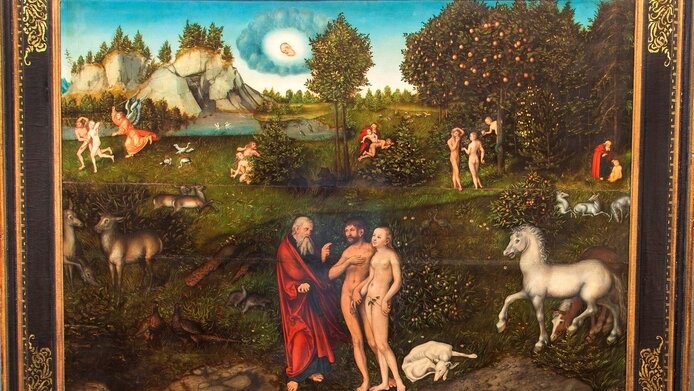In the eye of the beholder

The influence culture has on an individual’s experience and behaviour is a long-standing object of research on which substantial material has been assembled. Studies also show that the socio-cultural environment has an impact on visual perception. Yet until recently there were no investigations in art history that could demonstrate empirically that in art perception viewers indeed have a “cultural eye”.
The impact of culture
“The questions as to whether and to what extent visual habits and works of art are informed by the cultural environment of a given period is still a central issue in art history”, explains art historian Raphael Rosenberg from the University of Vienna. He cites a prime example: the emphasis on geometry in early-Renaissance Italian painting as opposed to the calligraphic focus in late-Gothic painting in southern Germany. Art historians use the term “period eye” to describe the impact of cultural and social circumstances on the work of artists and the perception of art viewers.
High-tech art research
In an ongoing project that is funded by the Austrian Science Fund FWF Rosenberg collected empirical evidence with a well-proven method from psychology: Eye tracking. In the world’s first eye-tracking lab for art history, which Rosenberg moved from Heidelberg to Vienna in 2009, he implemented several devices and developed with computer scientists form the University of Tübingen a new software in order to analyse not only patterns of attention, but also the movements of the eyes. A device developed in this project with the Fraunhofer institute Ilmenau enables to capture people’s eye movements without physical contact while they are viewing paintings in a museum.
Austria vs. Japan
Over the past two years Rosenberg and his team have conducted a comparative cross-cultural study. Eye tracking data was collected from a group of people from Japan and a group from Austria, each numbering 50 individuals who looked at paintings from different historical periods and both cultures. The visual cultures of these two countries are markedly different - but would this become apparent in the test persons’ eye movements? The answer is both “yes” and “no”. The researchers’ assumption that a person’s customary reading direction may be relevant in viewing a painting has not been confirmed to date, although the evaluation of the data is still under way. “In both groups, there was an emphasis on horizontal eye movements”, notes Hanna Brinkmann, a member of the project team, about the initial results. Brinkmann thinks this may be explained by the influence of the internet, which increasingly encourages people in Japan to write in horizontal rather than vertical lines.
Analytical vs. holistic
What does seem to be confirmed, however, is a cultural difference in the tendency to concentrate on the foreground or background of images, which is connected to the theory of western-type individualism as opposed to Asian collectivism. The Japanese respondents clearly focussed more attention on the background of the paintings than the Austrian viewers, who tended to concentrate more on the figures in the foreground. In addition to these two groups, the team of principal investigator Rosenberg also obtained a large amount of data from visitors of Vienna’s Kunsthistorisches Museum. For four weeks, the eye movements of more than 800 people were tracked without their initial knowledge. This was followed by a questionnaire, in which the individuals provided data for additional evaluation. “We use eye-tracking to open up new ways to better understand differences between groups of living persons and to develop an apparatus that should enable us to explain historical differences”, says Raphael Rosenberg about why he is interested in this field.
Art and gender
In addition to cultural influences and collective differences such as script, geometry, analytical or holistic thinking, another important factor in visual perception is gender. This explains why the issue of “gender” is the second key area of the FWF-funded project. At the laboratory, Mario Thalwitzer, a member of the project team, analysed the way female and male figures are perceived by male and female viewers as well as differences in the gaze of men and women using eye-tracking data. The team is trying to verify research hypotheses postulating that men have a more focussed gaze while women are more attentive to context.
Personal details Raphael Rosenberg is an art historian and deputy head of the Department of Art History at the University of Vienna. In his research, Rosenberg focuses on the history of the perception and interpretation of artwork. He heads the FWF project The Cultural and Gendered Eye in co-operation with the psychologist Helmut Leder from the University of Vienna. Rosenberg is a co-founder of the Cognitive Science Research Platform at the University of Vienna.
Publications









